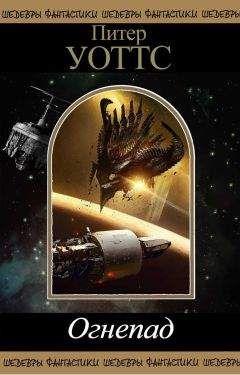178
Nelson D. L. and Cox M. M. Lehminger principles of biochemistry. NY: Worth, 2004. (В СССР издавался оригинальный учебник Альберта Ленинджера: Ленинджер А. Основы биохимии. – М.: Мир, 1985.)
Prigogine I. and Nicholis G. Exploring Complexity. NY: Freeman, 1989. (Русское издание: Пригожин И., Николис Г. Познание сложного. – М.: ЛКИ, 2008.)
Dawkins R. The Blind Watchmaker: Why the Evidence of Evolution Reveals a Universe Without Design. Norton, 1988. (Русское издание: Докинз Р. Слепой часовщик: как эволюция доказывает отсутствие замысла во Вселенной. – М.: АСТ, 2014.)
Metzinger T. 2003. Being No One: The Self-Model Theory of Subjectivity. Cambridge (Mass.): MIT Press, 2003. 713 p.
Pinker S. How the mind works. NY: WW Norton & Co., 1997. 660 p.
Koch C. 2004. The Quest for Consciousness: A Neurobiological Approach. Roberts, Englewood. CO, 2004. 447 p.
Wegner D. M. The Illusion of Conscious Will. Cambridge: MIT Press, 2002. 405 p.
Saks O. The Man who mistook his wife for a hat and other clinical tales. NY: Simon & Sinister, 1970. (Русское издание: Сакс О. Человек, который принял жену за шляпу, и другие истории из врачебной практики. – М.: АСТ, 2014.)
Островок Рейля, или закрытая долька, – часть мозга, находящаяся в глубине сильвиевой щели, между лобной, теменной и височной долями. По некоторым данным, передняя часть коры островка Рейля претерпела существенные изменения в ходе эволюции человека. (Прим. пер.)
McFadden J. 2002. Synchronous firing and its influence on the brain’s electromagnetic field: evidence for an electromagnetic field theory of consciousness. J. Consciousness Studies, 9, No. 4, 2002. P. 23–50.
Penrose R. The Emperor’s New Mind. Oxford University Press, 1989. (Русское издание: Пенроуз Р. Новый ум короля. О компьютерах, мышлении и законах физики. – М.: ЛКИ, 2008.)
Tononi G. and Edelman G. M. 1998. Consciousness and Complexity. Science 282: 1846–1851.
Bears B. J. A Cognitive Theory of Consciousness. NY: Cambridge University Press, 1988.
Hilgetag C. C. 2004. Learning from switched-off brains. Sci. Amer. 14: 8–9.
Roth G. 2004. The quest to find consciousness. Sci. Amer. 14: 32 39.
Pauen M. 2004. Does free will arise freely? Sci. Amer. 14: 41–47.
Zimmer C. 2003. How the mind reads other minds. Science 300: 1079–1080.
Crick F. H. C. and Koch C. The unconscious homunculus. In Neural Correlates of Consciousness-Empirical and Conceptual Questions. Ed. by T. Metzinger. Cambridge: MIT Press, 2000.
Churchland P. S. 2002. Self-Representation in Nervous Systems. Science 296: 308–310.
Miller G. 2005. What is the biological basis of consciousness? Science 309: 79.
Blakeslee S. 2003. The christmas tree in your brain. Toronto Star, 21/12/03.
Matsumoto K. and Tanaka K. 2004. Conflict and Cognitive Control. Science 303: 969–970.
Kerns J. G. et al. 2004. Anterior Cingulate Conflict Monitoring and Adjustments in Control. Science 303: 1023–1026.
Petersen S. E. et al. 1998. The effects of practice on the functional anatomy of task performance. Proceedings of the National Academy of Sciences 95: 853–860.
«Дилберт» – серия популярнейших комиксов Скотта Адамса, выходит с 1989 года. Упомянутый персонаж являет собой квинтэссенцию самовлюбленности и некомпетентности. (Прим. пер.)
Zimmer C. 2003. How the mind reads other minds. Science 300: 1079–1080.
Norretranders T. The User Illusion: Cutting Consciousness Down to Size. Penguin Press Science, 1999. 467 p.
Altenmuller E. O. 2004. Music in your head. Scientific American. 14: 24–31.
Pinker S. How the mind works. NY: WW Norton & Co., 1997. 660 p.
Matsumoto K. and Tanaka K. 2004. Conflict and Cognitive Control. Science 303: 969–970.
Helmuth L. 2003. Fear and Trembling in the Amygdala. Science 300: 568–569.
Dolan R. J. 2002. Emotion, cognition, and behavior. Science 298: 1191–1194.
Treffert D. A. and Wallace G. L. 2004. Islands of genius. Scientific American 14: 14 23.
Wegner D. M. 1994. Ironic processes of mental control. Psychol. Rev. 101: 34–52.
Proceedings of the Royal Society of London В (DOI 10.1098/ rspb.2003. 2548).
Aiello L. and Dean C. An introduction to human evolutionary anatomy. London: Academic Press, 1990.
Gallup G. G. (Jr.). 1997. On the rise and fall of self-conception in primates. In The Self: Across Psychology of self-recognition, self-awareness, and the Self Concept. Annals of the NY Acad. Sci. 818: 4–17.
Hauser M. D., Chomsky N. and Fitch W. T. 2002. The faculty of language: what is it, who has it and how did it evolve? Science 298: 1569–1579.
Carstairs-McCarthy A. 2004. Many perspectives, no cohcensus-a review of Language Evolution, by Christiansen & Kirby (Eds). Science 303: 1299–1300.
Dijksterhuis A. et al. 2006. Science 311: 1005–1007.
Vince G. 2006. «Sleeping on it’ best for complex decisions». Newscientist.com, http://www.newscientist.com/channel/being-human/dn8732.html.
Devlin A.M. et al. 2003. Clinical outcomes of hemi spherectomy for epilepsy in childhood and adolescence Brain 126: 556–566.
Pulsifer M. B. et al. 2004. The cognitive outcome of hemispherectomy in 71 children. Epilepsia 45: 243–54.
Moles A., Keiffer B. L. and D’Amato F. R., 2004. Deficit in attachment behavior in mice lacking the Uypioid receptor gene//Science 304: 1983–1986.
Plane J. M. C. et al. 2004. Removal of meteoric iron on polar mesospheric clouds. Science 304: 426–428.
Hauser M. D., Chomsky N. and Fitch W. T. 2002. The faculty of language: what is it, who has it and how did it evolve? Science 298: 1569–1579.
Fitch W. T. and Mauser M. D. 2004. Computational Constraints on Syntactic Processing in a Nonhuman Primate. Science 303: 377–380.
Premack D. 2004. Is Language the Key to Human Intelligence? Science 303: 318–320.
Holden C. 2004. The origin of speech. Science 303: 1316–1319.
Graddol D. 2004. The future of language. Science 303: 1329–1331.
BBC News. 2005. Brain chip reads man’s thoughts. March 31; статья доступна по адресу: http://news.bbc.co.uk/go/pr/fr/-/1/hi/health/4396387.stm.
Weng J. et al. 2001. Autonomous Mental Development by Robots and Animals. Science 291: 599–600.
Von Melchner L. et al. 2000. Visual behaviour mediated by retinal projections directed to the auditory pathway. Nature 404: 871–876.
Baughman R. H. 2003. Muscles made from metal. Science 300: 268–269.
Weissmuller J. et al. 2003. Change-induced reversible strain in a metal. Science 300: 312–315.
Piper A. and Merskey H. 2004. The Persistence of Folly: A Critical Examination of Dissociative Identity Disor der. Part I. The Excesses of an Improbable Concept. Can. J. Psychiatry 49: 592–600.
Piper A. and Merskey H. 2004. The Persistence of Folly: A Critical Examination of Dissociative Identity Disor der. Part II. The Defence and Decline of Multiple Personality or Dissociative Identity Disorder. Can. J. Psychiatry 49: 678–683.
Kaplan F. S. et al. 1998. The Molecules of Immobility: Searching for the Skeleton Key. Univ. Pennsylvania Orthopaedic J. 11: 59–66; статья доступна no адресу: http://www.upoj.org/site/files/v11/v11_12.pdf. Более свежую информацию можно найти в этой статье: http://www.uphs.upenn.edu/news/News_Releases/apr
Chernoff H. 1973. Using faces to represent points in k-dimensional space graphically. Journal of the Americal Statistical Association 68: 361–388.
Wilkinson L. 1982. An experimental evaluation of multivariate graphical point representations. Human Factors in Computer Systems: Proceedings. Gaithersberg. MD, 202–209.




